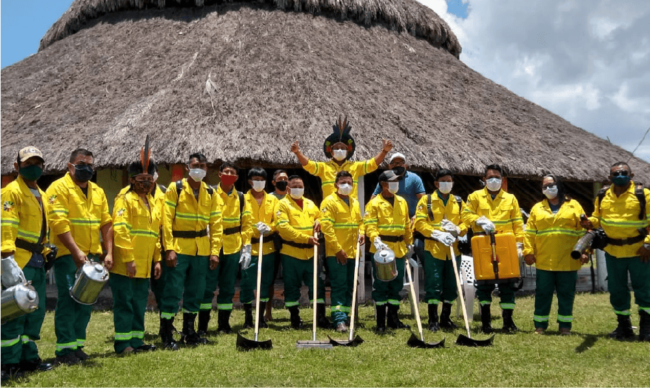 11.09.2024
11.09.2024
Community Brigades: The Frontline Against Forest Fires in Brazil
Support from the Casa Socio-Environmental Fund strengthens indigenous and volunteer brigades in the fight against forest fires, integrating traditional knowledge and technology to preserve ecosystems and mitigate the impacts of climate change
The increase in forest fires in Brazil, exacerbated by climate change and improper land use practices, has placed community brigades on the front lines of firefighting and prevention efforts.
Composed of volunteers and local leaders, these brigades use a combination of ancestral knowledge and modern techniques to tackle the fires that threaten entire ecosystems and the lives of thousands of people.
They play a critical role in detecting, preventing, and responding immediately to fires, often being the first to act in emergency situations due to their local knowledge and proximity to the affected territories.
According to the Institute for Ecological Research (IPÊ), around 200 brigades operate throughout Brazil, consisting of members from the communities themselves. These brigades have been essential in protecting forests, indigenous territories, and vulnerable areas.
The recent creation of the National Integrated Fire Management Policy (PNMIF), through the Brazilian Law 14.944/2024, reinforces this role. The policy aims to promote collaboration between civil society and the government to improve fire prevention and response, directly involving community brigades.
Indigenous Brigades of Roraima: Ancestral Wisdom and Technology
In Roraima, indigenous brigades have been a crucial line of defense against forest fires, which threaten the Lavrado, a unique ecosystem in the middle of the Amazon, similar to the Cerrado, where fire spreads easily.
According to Sinéia Wapichana, coordinator of the Indigenous Climate Change Committee (CINC) and the Department of Territorial, Environmental, and Climate Change Management of the Indigenous Council of Roraima (CIR), the combination of traditional knowledge with modern technologies has enabled an effective response to the prevention and combat of forest fires.
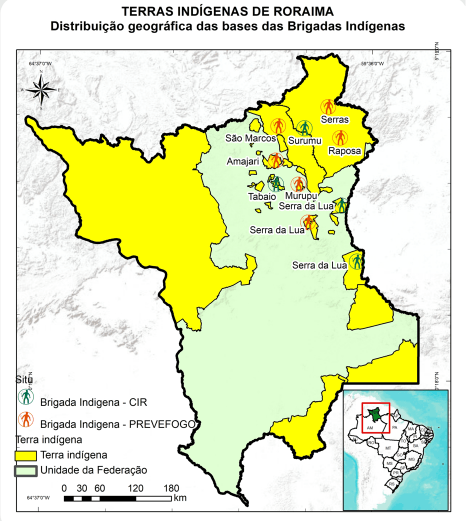
Distribution of Indigenous Brigades in Roraima. Source: CIR
“In 1998, we experienced a large fire in Roraima, and from that point on, we began to work on and establish indigenous brigades to combine technical knowledge with traditional practices,” explains Sinéia.
Since then, the Indigenous Council of Roraima (CIR) has been training indigenous brigade members, both men and women, to act in emergency and prevention situations. In addition to the training, the brigades use technologies such as drones and air quality monitoring systems to help combat fires. “The use of drones, for example, has been essential in identifying heat sources and directing the brigades in the field,” Sinéia added.

Sinéia Wapichana is the coordinator of the Indigenous Climate Change Committee (CINC) and the Department of Territorial, Environmental, and Climate Change Management of the Indigenous Council of Roraima (CIR). She is an important indigenous leader and environmental activist. Photo: U.S. Embassy in Brazil Archives.
The implementation of satellite internet technologies has enabled efficient communication between the brigades and operational bases, facilitating logistics and remote monitoring.
One of the biggest challenges faced by the brigades is combating fires that originate outside indigenous lands. “This year, 70% of the fires came from outside our territories,” says Sinéia.
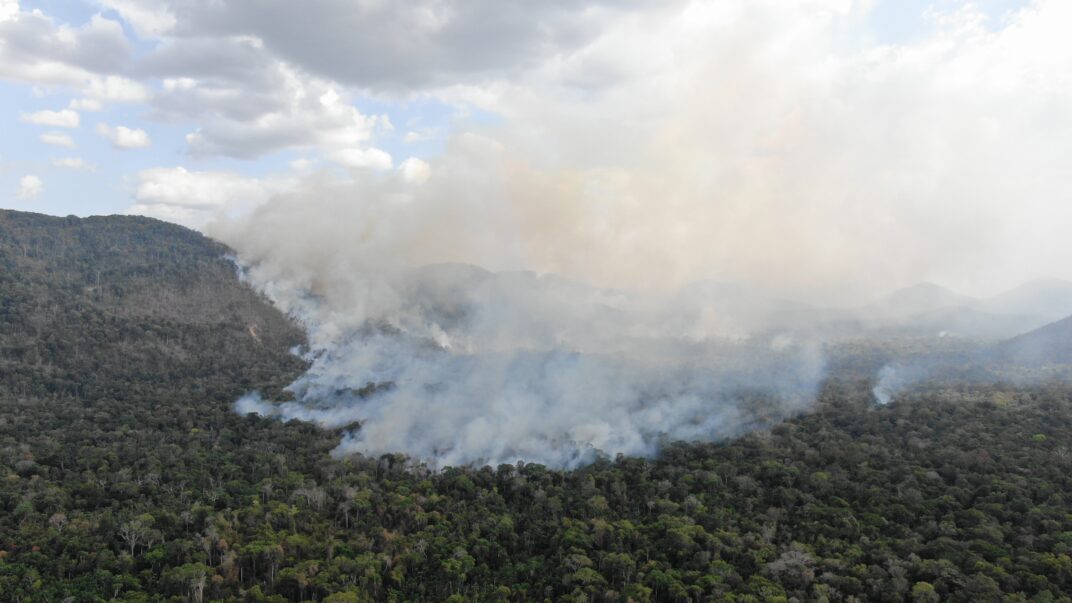
The use of drones is an important part of the strategy for monitoring and combating forest fires. Photo: CIR Archives.
The importance of community brigades also extends to prevention. Sinéia mentioned that the preventive work is based on life plans developed by the communities, which include territorial planning practices and the sustainable use of fire. “Prevention is one of our priorities, and this is where the traditional knowledge of indigenous peoples proves extremely valuable,” she said.
Cavalcante Volunteer Brigade (BRIVAC): Defending the Cerrado
In the Chapada dos Veadeiros region in Goiás, the Cavalcante Volunteer Environmental Brigade (BRIVAC) has played a key role in protecting the Cerrado biome from fires. Under the leadership of Rafael Drumond, the brigade has been training local communities, such as Quilombo São Domingos, to respond quickly to fires and develop sustainable fire management strategies.
Click to watch the video “Ongoing Support for Community and Volunteer Brigades,” an initiative by Casa Fund in partnership with the Comuá Network for the Philanthropy that Transforms Month.
“BRIVAC took the initiative to strengthen the region’s community brigades, training them for the initial firefighting efforts,” explains Rafael Drumond.
In addition to directly combating fires, community brigades also play an important role in environmental education and the restoration of areas affected by fire.
“Community brigades can greatly contribute to reducing fires in the region while also carrying out environmental education actions and restoring degraded areas.” Rafael Drumond
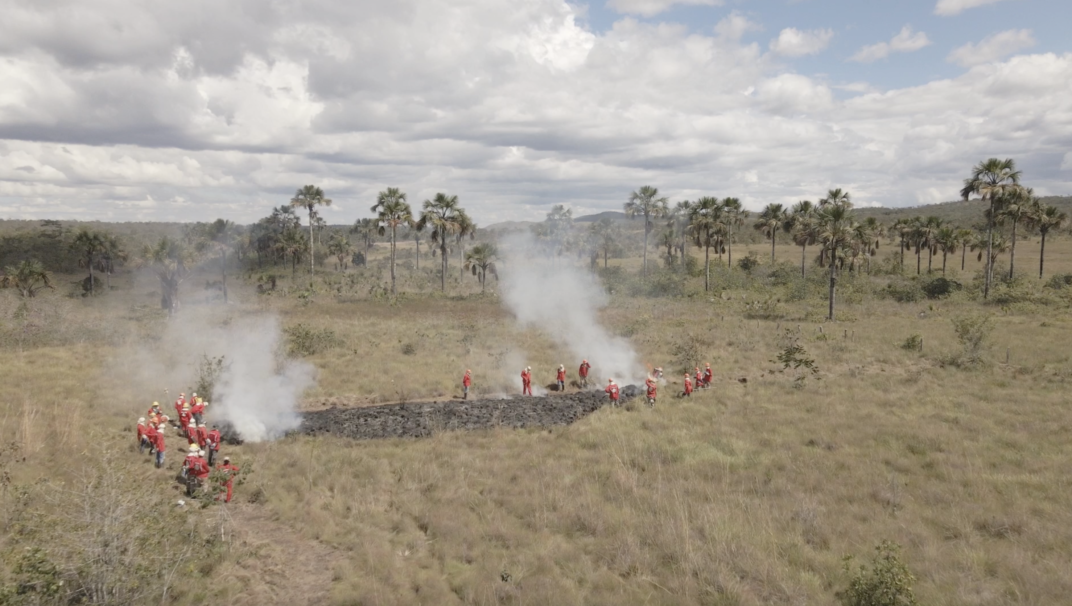
BRIVAC conducts training and the formation of volunteer brigades in regions of Chapada dos Veadeiros, focusing on firefighting, integrated fire management, and environmental education. Photo: BRIVAC Archives.
One of BRIVAC’s main focuses has been the recovery of springs that were compromised by the fires. “We identified springs affected by the fires, and we are working on restoring these areas,” explains BRIVAC’s president.
This integrated action strengthens the territory and protects both biodiversity and local ways of life.
Casa Fund and Support for Brigades
The work of community and volunteer brigades is recognized for its effectiveness, but it also faces challenges. The lack of proper Personal Protective Equipment (PPE) is one of the main difficulties. The support of organizations like the Casa Socio-Environmental Fund has been crucial in addressing this need.
According to Sinéia Wapichana, “PPE is essential to ensure the safety of brigade members, and we are grateful for the support we received to properly equip our brigades.”
Casa Fund has been a key player in strengthening community brigades, providing financial and logistical support to help these initiatives thrive.
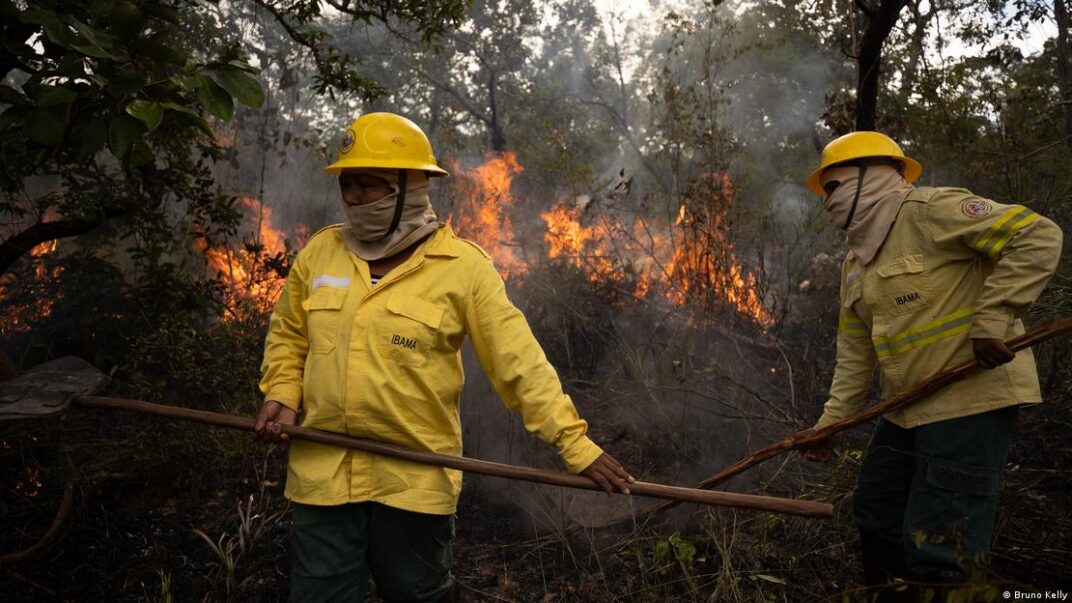
Apinajé women, from the first female indigenous volunteer brigade in the Amazon, participate in the first prescribed burn activity of the 2023 fire season in the Apinajé Indigenous Territory. Photo: Bruno Kelly.
Beatriz Roseiro, program manager, highlights that the partnership with the brigades aims to integrate the knowledge of local communities with technological solutions and long-term strategies. “We are committed to ensuring that these brigades have the necessary resources to face the challenges of forest fires and protect their territories.”
Casa Fund’s support for firefighting brigades began to take shape due to the urgent need for resources to combat fires that had already spread. Beatriz Roseiro explains that, initially, the support was limited to supplies and logistics, which restricted the ability to carry out long-term and structural actions.
“We noticed that these much-needed resources were quickly consumed by supplies and logistics, allowing those already trained and equipped to combat fires to act, but preventing structural and planning actions,” says Beatriz Roseiro.
To overcome these limitations, Casa Fund launched the call for projects in 2021 entitled “Support for Grassroots Groups in Facing Climate Emergencies Caused by Forest Fires.” Since then, Casa Fund has provided structural support to volunteer and community brigades, grassroots associations, and communities, aiming for a planned and effective approach to fire prevention and combat.
Casa Fund’s support is divided into three main lines. The first is the structuring and strengthening of volunteer brigades, which includes capacity-building, restructuring, and logistical support. Beatriz Roseiro emphasizes that “community brigades are the first responders to forest fires, as local residents know their territories best.”

Training in the Mãe Terra Village, Cachoeirinha Indigenous Territory, in Mato Grosso do Sul. The community was supported by Casa Fund in partnership with ECOA in 2022. Photo: Victor Hugo Sanches.
The second line is integrated fire management, which involves activities related to prevention, monitoring, and fire control, as well as training and reforestation. The third line is community mobilization and engagement, aiming to increase community involvement in fire prevention and create channels for reporting incidents.
To date, Casa Fund has supported 145 projects focused on combating forest fires, with an investment of over R$6 million. These actions have helped prevent fires and empowered local communities to take the lead in protecting their territories.
Casa Socio-Environmental Fund Launches Emergency Support Call for Firefighting Brigades
In response to the severity of forest fires and the growing need for support, the emergency support call has emerged as a crucial measure to strengthen volunteer and community brigades. With funding of up to R$20,000 per project, the call aims to provide essential resources for purchasing equipment, food, and logistics, as well as ensuring basic food baskets and life insurance for brigade members.
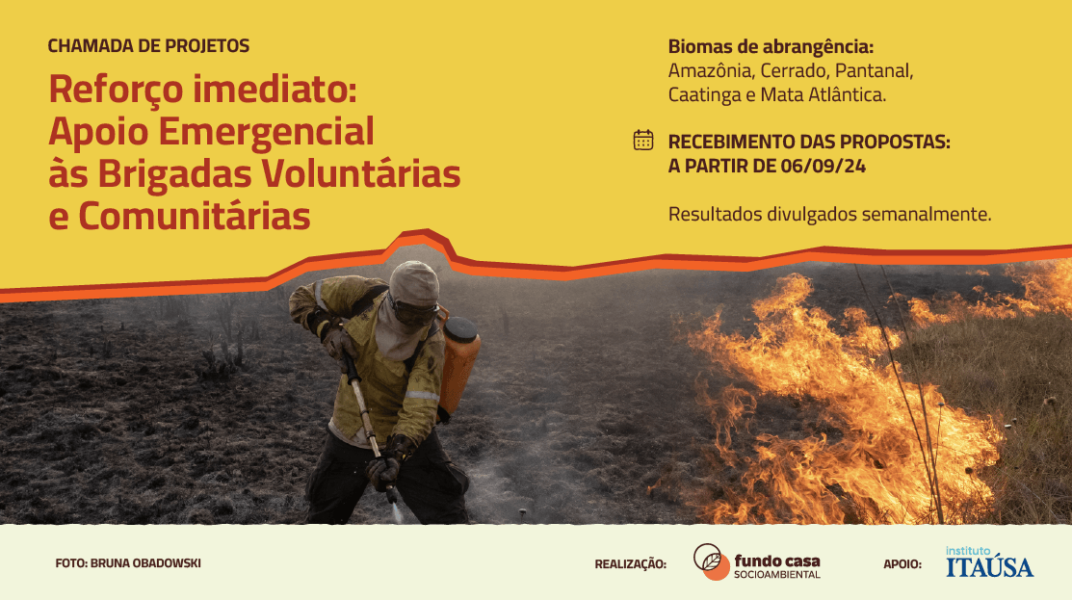
This initiative strengthens volunteer brigades in firefighting efforts and highlights their essential role in protecting Brazil’s biomes. Aimed at directly supporting those on the front lines, the Casa Socio-Environmental Fund reaffirms its commitment to environmental preservation and community resilience in the face of climate change. For more information on the call and how to apply, visit the official call page.
